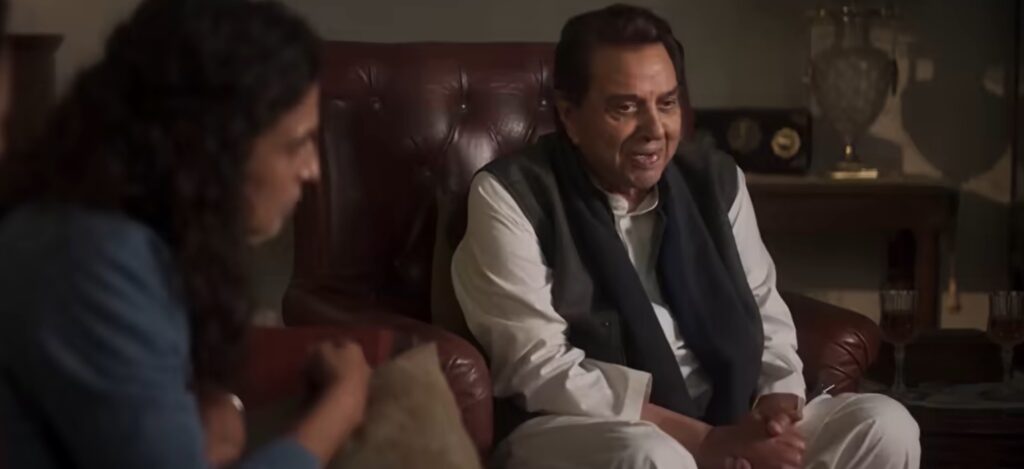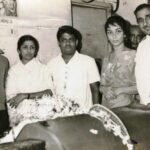He was an extraordinarily accomplished and versatile actor. He was recognized for it by the industry but won no awards in a milieu wherein natural acting is not considered award-worthy. He was the enduring actor who survived amidst hyped names, for his debut film, Dil Bhi Tera Hum Bhi Tere, was released in December 1960, while his swan song, Ikkis, with him playing the real-life character of Brigadier M.L. Khetarpal, will release on Christmas 2025.
The actor, who would have celebrated his 90th birthday on 8th December (exactly two weeks ahead!) spent 65 years under the arc lights. And he showcased an incredibly variegated repertoire of characters that spanned from a physically-challenged ghost (Ghazab) and a street performer (Seeta Aur Geeta) to a professor (Chupke Chupke), an Abyssinian slave (Razia Sultan) and the spiritual Sheikh Salim Chisti (in his only web series, Taj—Divided by Blood).
Dharmendra was no calculating or method actor. His gods were always the director and the character, so he seamlessly flowed into them all like water into containers of diverse shapes. Once Phool Aur Pattharbecame a super-hit and the biggest blockbuster of 1966, he acquired his macho image (thanks to the shirtless sequence that caught attention despite his doing a similar scene in Shola Aur Shabnam earlier) and delivered whammy after whammy.
And so, though women looked up to him as son, brother or lover and men admired him for his machismo as well as soft looks and image, Dharmendra became slotted oftener than not in tough, action roles. And he excelled in them as well, as espionage agent, a police officer, a criminal, a don, and more for over two decades.

Alongside, after Seeta Aur Geeta, filmmakers saw and began to exploit his formidable comic timing—again something that came naturally to him. Pratiggya, Sholay, Ghazab and Chupke Chupke demonstrated his ability to make us chuckle, chortle or guffaw. Inarguably, the last-mentioned film is considered among his very best work and we cannot forget his professor-turned-chauffeur in the laugh-riot.
Dharmendra was so secure as an actor that he never hesitated in taking up roles where the heroine’s or even another hero’s role was more powerful. Anupama or Devar (Sharmila Tagore), Mera Gaon Mera Desh(Vinod Khanna), Seeta Aur Geeta (Hema Malini), Sholay (Sanjeev Kumar) and Dost (Shatrughan Sinha) were examples of such movies that Dharmendra did with the confidence that he could make his own mark. And he was never indifferent to his work, even when the role was small, like in Johnny Gaddaar.
In the 1990s, he did a slew of B-grade films to support his mission of a studio in Khandala and to maintain a household where, at any given time, many relatives from Punjab would be in residence, but when he returned to A-grade films with Apne (2007), it was with an intense performance that actually deserved all the Best Actor awards that year, but received none!
The Man behind the He-Man
But if anything was superior even to his dazzling versatility as actor, it was his human quality. For Dharmendra, the operative word was always love—love for everyone, for his work, for the media (which let him down shockingly when rumors of his death were perpetuated a few days ago) and for the camera above all. When I was doing a video interview of him many years ago, he insisted that the cameraman shoot him from a definite side of his face!
Dharam-ji, as the world addressed him, cared for all. Active on ‘X’, he would even post pictures of his cattle at his farmhouse, demonstrating how much he cared for them. A director revealed how he beat up a man from rural Punjabi threatening him outside his home and then took care of his medical treatment! He also never sold his first car (a Fiat) even after acquiring the latest luxury cars.
As for me, he was in the US for the premiere of his film, Apne, when my colleague there with India-West (for whom I was Mumbai Correspondent) interviewed him. She requested me to write an introduction for her story. I had never met Dharam-ji, but wrote an 800-word capsule of his work and times that she carried as a separate piece. The wonderfully grounded human being that he was, Dharam-ji read my piece, called the newspaper’s office, took my number and called me at 9.30 am to compliment me on the writeup. He told me, “There have been some 5000 interviews and writeups of mine, but your article has peeped into my soul!” And what was my reward? Access to his private number and a promised hug, which came weeks later when he returned to the city!
Now which huge star take so much effort for a journalist he does not even know?
When the time came for Rupa Publications to offer me a book on any star, it was a no-brainer that I chose him. He quietly blessed me, met me for a long meeting and told me interesting things, shared many pictures and was freely available if I wanted clarifications while writing the book.
Dharam-ji also narrated to me the story of how the man turned poet in 2007 just after Apne. He was recuperating for 30 seemingly interminable days in hospital. He told me, “No one can share your pain, and I was scared of the loneliness, so I began writing.” The poems, from a mere two lines to long ones, demonstrated his keen grasp of life’s truisms and also reflected on his own thoughts and perceptions. If anything, they only expanded my view of his unique grounded nature as a human being, as he let me choose whatever I wished for a chapter in his book!
As one perceptive verse went:
Soch le kuch kehne se pehle; Ghaav talwar ka bhar jaata hai; Labz ka Nahin
(Think before you speak, A wound from a sword will heal, but not the wound inflicted by the lips.)
When I later informed him that his book was released but I had not yet got my quota of copies, he said reassuringly, “Tu mere baare mein boora to nahin likhega (You will not right anything negative about me!).” Quite naturally, his fans have ensured good sales of my book, Dharmendra: Not Just A He-Man, even seven years after it was released on his birthday in 2018.
After all, isn’t (Why should I use the past tense when his human qualities will always be loved?) Dharmendra the complete human being?


![DSCN1607[1].jpg](https://southasianherald.com/wp-content/uploads/2025/11/DSCN16071.jpg-1170x878.jpeg)



